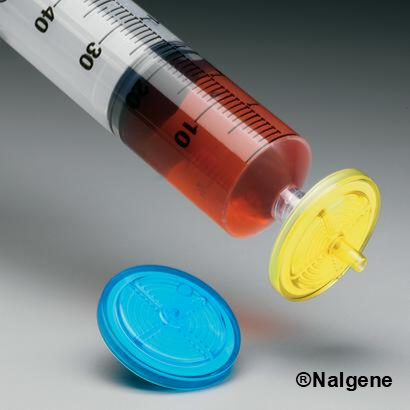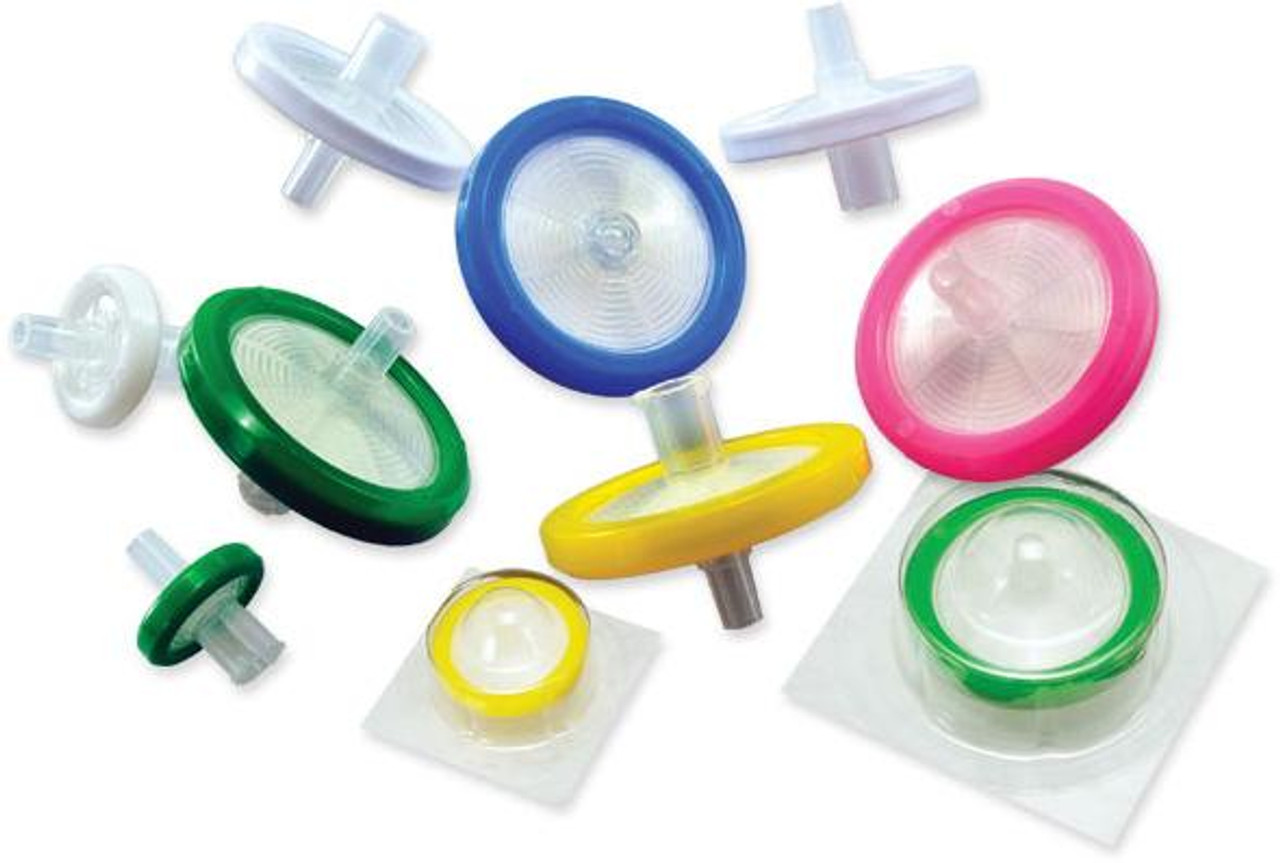While they look like laboratory "eye candy" with their catchy, colored casings, syringe filters are all about getting down and dirty with serious lab work.
A syringe filter is essentially a bit of membrane sandwiched between two halves of a plastic disc with a port on either side through which the solution to be filtered flows.
Unlike larger laboratory filter systems which use the in-house vacuum system to draw liquid through the membrane, as the name indicates, a syringe filter uses hand-held force to either draw up or push liquid through the narrow port.

Like their larger cousins, the membranes can come in a variety of porosites (space between the holes) depending on the level of filtration needed.
Typically, .45 microns is used to purify a solution containing high-concentration of particulate matter while .22 microns is used when sterilizing a solution (removing bacteria and viruses) and preparing gasses for HPLC.
Syringe filters come in several diameter sizes which are selected depending on the volume of liquid needed to be filtered. Small volume work will choose a 13mm while larger volumes will benefit from the increased surface area that a 25 or 30mm filter disc offers.
Among our customer base, the most popular applications requiring the use of syringe filters are purifying/sterilizing media or removing impurities to prepare solutions for HPLC; which is why they are among a few products that are double listed, both as a tissue culture product and for analytical chemistry.
Syringe filters also have applications in the petroleum, water testing and beverage industry.
The official Wikipedia entry for syringe filters suggests a darker use: Removing foreign substances (like fungi and spores) from injected illegal drugs and supplements. If this is accurate, then perhaps some caution is warranted when a residential shopper orders syringe filters or product mysteriously vanishes from the lab.
Stellar Scientific offers seven different variations of syringe filters.
Five of these are the most common. Here is a quick description of each and where it excels.
PES - Polyethersulfone: Hydrophilic. Mainly used in life-science applications like tissue culture, media, and buffers due to very low protein and nucleic acid binding and excellent flow rates.
Nylon - Hydrophilic. Used for general filtration, like beverage filtration. Also used with aqueous & mixed organic solutions, medical assays and HPLC sample preparations.
PVDF - Polyvinylidene difluoride - Hydrophilic. Low protein-binding for filtration of non-aggressive aqueous and mild organic solutions. High protein recovery and excellent for high-temperature filtration.
PTFE - Polytetrafluorethylene - Hydrophobic. Membrane has great temperature resistance. Perfect for degassing/clarifying aqueous samples and for strong acid solvent filtration or alkali solvent filtration. Wetting the membrane with alcohol and water gives a hydrophilic characteristic.
MCE - (mixed cellular esters) - Hydrophilic. For aqueous samples filtration that need higher flow rates and larger volume. Effectively binds trace proteins. Removes oil particulates and bacteria.
Newer entries to our catalog are variations on Cellulose Acetate and are valuable for HPLC work.
To make it easier to quickly identify the correct syringe filter among a jumbled drawer-full of filters, many manufacturers have developed a color-coding system - hence the pretty "eye-candy" quip above.
Syringe filters are one of the most frequently requested sample we get. What this indicates is a wide range in quality in the marketplace; some perform better than others.
To date, every sample has resulted in a sale, so we are very confident shoppers will approve of our syringe filters. But go ahead - ask us for a sample to see for yourself!


